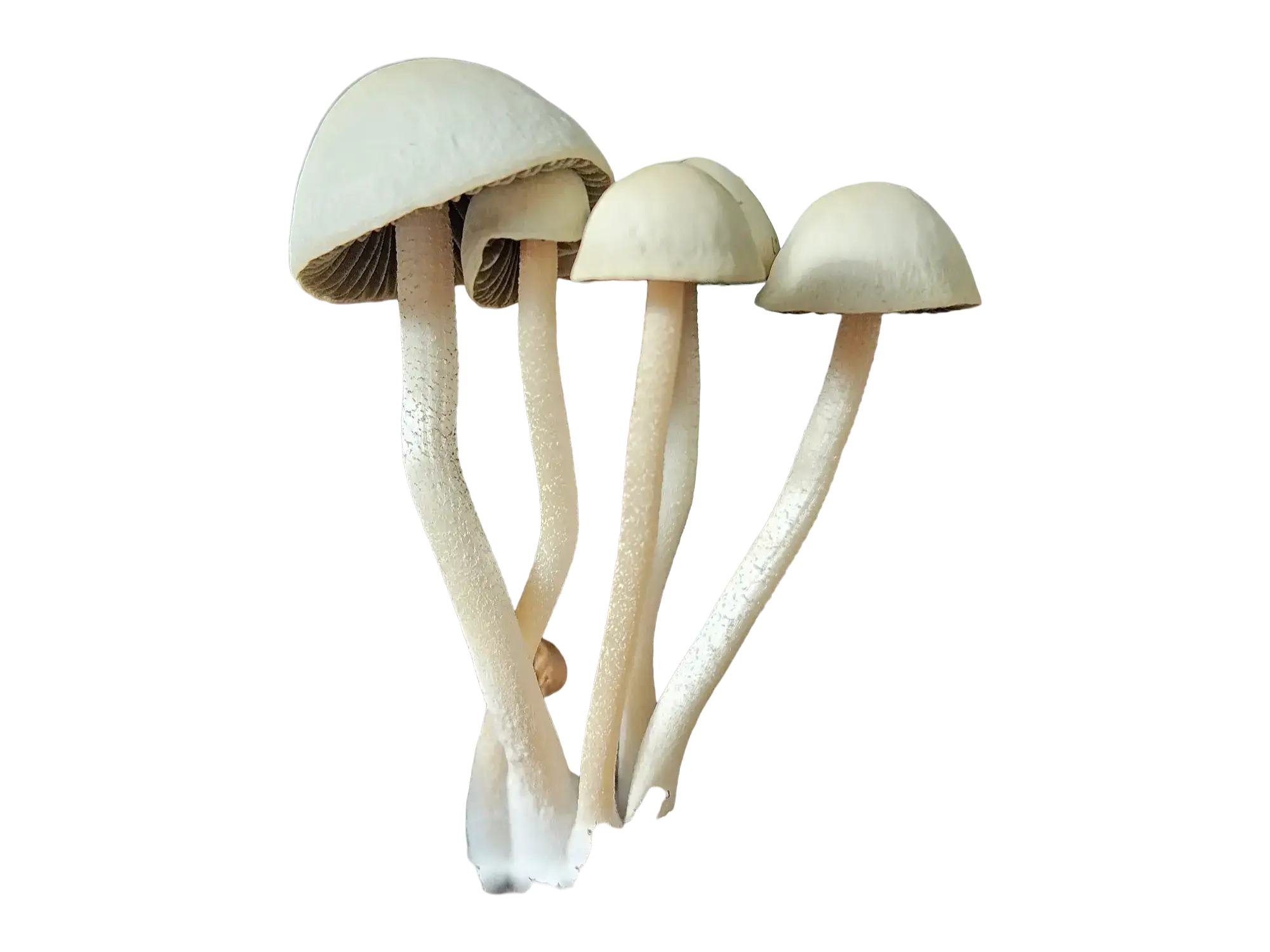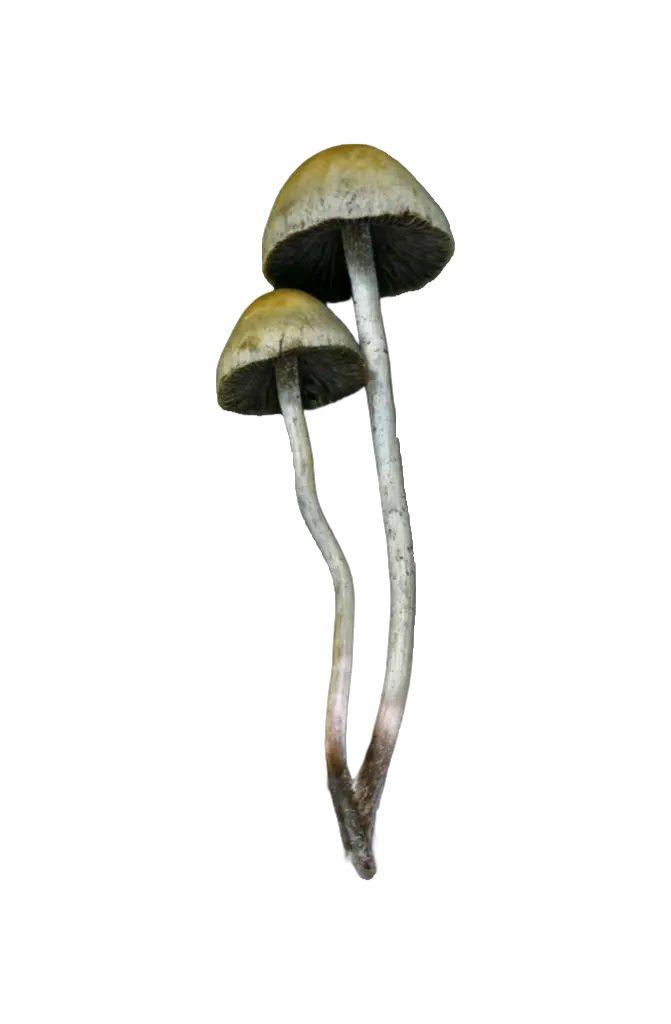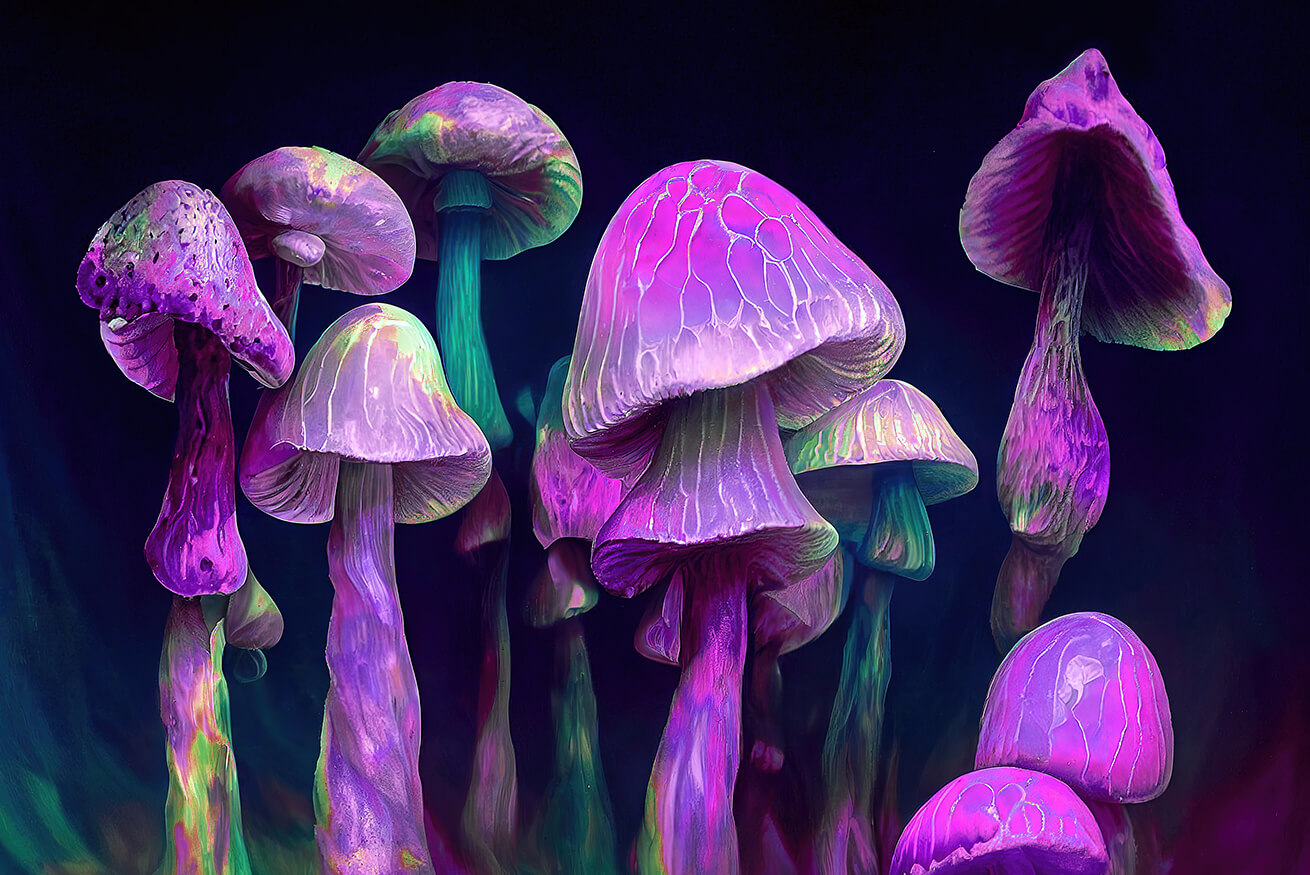Here’s something that blows my mind every time I think about it: nature independently invented the same psychedelic molecule twice, using completely different recipes. We’re talking about psilocybin mushrooms—those fascinating fungi that have captivated humans for thousands of years and scientists for decades. Recent research has revealed that two distantly related groups of mushrooms evolved to produce psilocybin through radically different biochemical pathways, suggesting this powerful compound offers such significant evolutionary advantages that nature found it worth discovering multiple times.
Ready to Explore the Fascinating World of Mycology?
Our Humble Bundle brings together three exceptional strains—Squat Mac, Albino Bluey Vuitton, and Ingeli—perfect for microscopy enthusiasts wanting to study diverse genetic expressions. These premium spore syringes offer you a comprehensive introduction to the remarkable diversity of cubensis genetics.
Get the Humble Bundle NowWhat We’ll Cover
- The Discovery That Changed Everything
- Two Mushroom Families, Two Different Paths
- The Biochemical Journey to Psilocybin
- Why Did This Evolution Happen Twice?
- What This Means for Research and Science
- Frequently Asked Questions
The Discovery That Changed Everything
Let’s rewind to 1958, when Swiss chemist Albert Hofmann—yes, the same scientist who discovered LSD—became the first researcher to isolate psilocybin from Psilocybe mushrooms. This groundbreaking work opened the door to understanding these remarkable fungi at a molecular level. But the story doesn’t end there.
For years, scientists suspected that some mushrooms outside the Psilocybe family might also produce psilocybin. Specifically, they had their eyes on Inocybe mushrooms, commonly known as fiber caps. Recent research published in the journal Angewandte Chemie International Edition confirmed these suspicions and revealed something far more intriguing: these two mushroom groups evolved completely different biochemical pathways to produce the exact same molecule.

Why This Discovery Matters
When two distantly related organisms independently evolve the same trait, it’s called convergent evolution. This suggests the trait provides such significant survival advantages that natural selection favored it multiple times. The fact that psilocybin biosynthesis evolved twice tells us this molecule is incredibly important to these fungi—we just don’t fully understand why yet.
Two Mushroom Families, Two Different Paths
Here’s where things get really interesting. Psilocybe and Inocybe mushrooms live completely different lifestyles, despite sometimes sharing the same habitats. Understanding these differences helps us appreciate why they might have evolved psilocybin independently.
Psilocybe mushrooms—the group that includes what we traditionally call magic mushrooms—are saprophytes that thrive on decaying material like decomposing organic matter or even cow dung. They’re nature’s recyclers, breaking down dead material and returning nutrients to the ecosystem.
Inocybe mushrooms, on the other hand, are mycorrhizal fungi that form intimate, mutually beneficial relationships with living trees. They connect with tree roots underground, exchanging nutrients and water for sugars the trees produce through photosynthesis. It’s a sophisticated partnership that’s existed for millions of years.

Despite these vastly different ecological niches, both groups somehow arrived at the same chemical destination: psilocybin. But—and this is the kicker—they took completely different routes to get there.
Want to study the classics? Our Spore Bundle features Enigma, APE, and Golden Teacher—three legendary strains perfect for microscopy research.
Explore the Classic Spore BundleThe Biochemical Journey to Psilocybin
Let me paint you a picture that one of the researchers used to explain this discovery. Imagine you’re trying to get across New York City. You and a friend start from the same location and need to reach the same destination. You might take completely different routes—different streets, different neighborhoods—but somewhere in the middle, you both pass through Central Park before diverging again on your separate paths to the final meeting point.
That’s exactly what Psilocybe and Inocybe mushrooms do at the molecular level. Both groups start with the same amino acid building block. From there, they follow completely separate road maps of genes and enzymes. Midway through their biochemical journeys, they briefly converge at an intermediate molecular point before parting ways once again—only to ultimately produce the identical end product: psilocybin.
Dirk Hoffmeister, a pharmaceutical microbiologist at Friedrich Schiller University Jena in Germany and author of the study, admitted the research team was surprised by how profoundly the two pathways diverged. “We definitely hadn’t expected that the two pathways would be so radically different,” he noted.
Understanding Biosynthetic Pathways
Think of biosynthetic pathways like recipes. Just as you can make bread using different methods (sourdough starter vs. commercial yeast), organisms can synthesize the same molecule using different biochemical “recipes.” The fact that nature found two completely different recipes for psilocybin suggests both methods are efficient and evolutionarily stable.
Why Did This Evolution Happen Twice?
This is the million-dollar question that keeps mycologists up at night. Nobody knows for certain why these mushrooms evolved to produce psilocybin in the first place. Was it to deter predators? To attract spore-dispersing insects? To defend against competing microorganisms? The honest answer is: we’re still figuring it out.
Jason Slot, a mycologist at Ohio State University who wasn’t involved in the research, pointed out that while these findings don’t directly explain why mushrooms produce psilocybin, they do provide strong evidence that it wasn’t an evolutionary accident. Instead, psilocybin appears to be a “solution to a particular challenge faced by mushroom-forming fungi” that helped them thrive in their respective environments.
Here’s what makes this particularly fascinating: for a trait to evolve independently in two different groups, the evolutionary pressure must be significant. Whatever advantage psilocybin provides, it’s apparently worth the metabolic cost of producing it. These mushrooms are dedicating precious cellular resources to manufacturing this complex molecule, which means it must be doing something important for their survival.
Some researchers hypothesize that psilocybin might affect the behavior of insects or animals that interact with these mushrooms, potentially in ways that benefit spore dispersal. Others suggest it could have antimicrobial properties that protect the fungus from bacterial or other fungal competitors. The truth might involve a combination of factors we haven’t even considered yet.
What This Means for Research and Science
The research team, led by Dr. Hoffmeister, used sophisticated techniques to produce and analyze the enzymes responsible for psilocybin biosynthesis in both mushroom groups. They employed computer models to predict the molecular structures of newly discovered enzymes along the pathway. This kind of detailed biochemical mapping has practical applications beyond just satisfying our curiosity.
Dr. Hoffmeister emphasized that this research expands our toolbox for synthesizing psilocybin for scientific research and potential therapeutic applications. Understanding multiple pathways to produce the same molecule gives researchers more options for efficient, large-scale synthesis.
Jon Thorson, a chemist at the University of Kentucky, acknowledged that psilocybin is already a relatively simple molecule to synthesize. However, he noted that the new study “expands our molecular level of understanding” of the biosynthetic steps involved, potentially paving the way for producing psilocybin in more “user-friendly formats.”
The Future of Psilocybin Research
As therapeutic research into psilocybin accelerates worldwide, understanding multiple pathways for its biosynthesis becomes increasingly important. This knowledge could lead to more efficient production methods, making research and potential treatments more accessible and affordable.
According to Dr. Hoffmeister, these findings remind us that “nature finds more than one way to make important molecules,” demonstrating that mushrooms are indeed “brilliant chemists.” This research exemplifies how studying the natural world continues to inspire and inform human innovation.
For those of us passionate about mycology, this discovery reinforces something we’ve always suspected: mushrooms are far more sophisticated than most people realize. They’re not just passive organisms waiting to be discovered—they’re active problem-solvers that have been conducting chemistry experiments for millions of years longer than we have.
Frequently Asked Questions
What is psilocybin biosynthesis?
Psilocybin biosynthesis refers to the series of biochemical reactions that mushrooms use to produce the psilocybin molecule. It’s essentially the step-by-step chemical recipe that converts simple amino acid building blocks into the complex psychedelic compound. Recent research has revealed that different mushroom families use entirely different recipes to create the same end product.
How many types of mushrooms produce psilocybin?
Psilocybin has been identified in over 200 species of mushrooms across multiple genera. The most well-known are Psilocybe species (like Golden Teacher and Penis Envy variants), but the compound also appears in Panaeolus, Gymnopilus, Inocybe, and several other mushroom groups. The fact that psilocybin appears across such diverse fungi suggests it evolved multiple times independently.
Why would mushrooms evolve to produce psychedelic compounds?
Scientists are still debating this question! Current theories suggest psilocybin might serve as a defense mechanism against predators, could affect insect behavior in ways that aid spore dispersal, or might protect the mushroom from competing microorganisms. The fact that it evolved independently in multiple mushroom families suggests it provides significant survival advantages, though the exact mechanisms remain under investigation.
What’s the difference between Psilocybe and Inocybe mushrooms?
These two mushroom groups live completely different lifestyles. Psilocybe mushrooms are saprophytes that decompose dead organic matter, while Inocybe mushrooms form symbiotic relationships with living tree roots. Despite these differences, both groups evolved to produce psilocybin—but through entirely different biochemical pathways. Interestingly, while many Psilocybe species contain psilocybin, most Inocybe species actually produce dangerous neurotoxins instead, with only a handful producing psilocybin.
How does understanding psilocybin biosynthesis help research?
Knowing the detailed biochemical pathways for psilocybin production allows researchers to potentially synthesize the compound more efficiently in laboratory settings. This is increasingly important as clinical research into psilocybin’s therapeutic potential expands. Having multiple biosynthetic routes to choose from gives scientists more options for producing high-quality psilocybin for research and potential medical applications.
Are Atlas Spores legal for research and microscopy?
Yes! Mushroom spores are legal to possess and study in most jurisdictions for microscopy, research, and educational purposes. Our spore syringes contain only spores—no psilocybin—making them legal to purchase and study. They’re perfect for microscopy enthusiasts, researchers, and anyone interested in mycology. Always check your local laws, as regulations vary by location.
The Endless Fascination of Fungal Chemistry
Every time I dive into research like this, I’m reminded why I fell in love with mycology in the first place. These organisms that we often overlook—literally living beneath our feet—are conducting sophisticated chemistry that we’re only beginning to understand. The fact that two distant mushroom cousins independently figured out how to make psilocybin, using completely different molecular recipes, tells us that this compound is doing something genuinely important in the fungal world.
We’re living in a golden age of mycological research. Scientists are mapping genomes, decoding biochemical pathways, and uncovering evolutionary mysteries that have remained hidden for millions of years. For those of us passionate about mushrooms, whether through microscopy, cultivation research, or simply appreciating their biological brilliance, there’s never been a more exciting time to explore this kingdom.
The story of psilocybin’s evolution reminds us that nature is the ultimate chemist, innovator, and problem-solver. And we’ve only scratched the surface of understanding the incredible chemistry happening in the fungal realm.
Start Your Mycology Journey Today
Whether you’re fascinated by fungal evolution, interested in microscopy research, or simply want to explore the incredible diversity of mushroom genetics, Atlas Spores has everything you need. Browse our complete collection of premium spore syringes and liquid cultures.
Explore Our Full Collection


